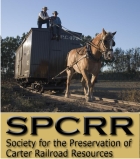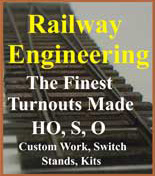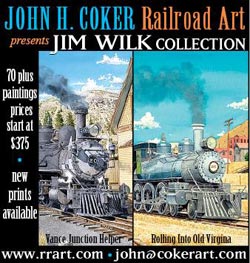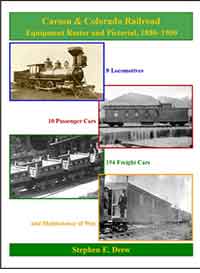A week ago I was in Juneau Alaska… for exactly 71 hours… Kyle Wyatt (see the occasional Kyle’s corner on this site) and I were consulting for the Alaska State Museum on how to approach a narrow gauge electric locomotive for a new display… Their very professional staff generally finds themselves addressing small, less industrial objects… their collection of Indian baskets is spectacular… they have a wide variety of kayaks… there are stuffed and mounted birds and animals… they have Sarah Pallen’s rifle (it was given to the Governor of Alaska by the NRA, so is state property… and now in the museum… not on display, but down in storage in the basement)
Juneau Alaska has a long and rich history of mining, complete with railroads to support that mining.
The locomotive is a Baldwin/Westinghouse 18 ton, 3’gauge electric, built in 1914 for Alaska Gastenau Gold Mining Company. After the A-G shut down in 1921, it and a sister, and cars were sold to Santa Cruz Portland Cement in Davenport, north of Santa Cruz. After Santa Cruz converted to a conveyer system about 1980, this loco and the sister eventually joined the collection of the California State Railroad Museum. A few years ago this locomotive was given to the Alaska State Museum.
Their staff frequently uses Q-tips to clean objects… a Q-tip is the correct tool when cleaning a basket but is probably the wrong strategy when dealing with a locomotive… The museum’s staff understands Q-tips are not the answer… but needed help in identifying the answer… so we were asked to join them for a few days… we also did a couple of radio interviews, and gave a evening lecture… So our mission was two fold, dealing with railroad locomotives as museum objects, and the stories this told about local history…
So the railroad locomotive as museum object was pretty easy, it is what we both do… but the history required some work… We both spent some time… both in Alaska, but also before, catching up on local railroad history… local mining history… and local history in general… Kyle went up a week early with his wife Deb… by chance, her grandfather worked for Alaska Treadwell, and he (her grandfather) is considered a notable area pioneer. Deb left for points south a few hours before I arrived… so Kyle and I were without our local history muse…
Kyle and I had rosters published in the 2nd addition of Clifford’s Yukon-Alaska Railroads (originally published as Rails North, the new edition is much revised and improved) research in Baldwin and Porter records and some random newspaper clippings… We had access to photos and drawings from the associated Alaska State Archives… We are both pretty good with Google and web searches… We kind of looked like the pro’s from Dover… we knew more than anyone else we met…
The talk went well, the radio interviews went well… the Locomotive as museum object went very well (although there is a written report due)
Along the way, we may have solved the great mystery of local railroad history… identifying the remains of a locomotive buried wheels up in the woods… a locomotive that neither of us has seen, but both have seen in photos… a locomotive, apparently built by Risdon of San Francisco, inside geared, of steam outline (but could be compressed air, and may or may not still have a boiler or air tank attached) Kyle had a newspaper clipping received years earlier… which suggests a Risdon locomotive was being built for a railroad in Sheep Creek for Nowell… of course it is also reported in sources including Clifford as Howell… and while the remains are about 24” gauge the Porter list suggests that Nowell or Howell also bought a 30” gauge loco later… Sheep Creek was later the site of the A-G operation with 36” gauge haul railroad (home of our locomotive) and a 26” gauge mining operations… so, we possibly have 4 gauges in a single place over a period of 40 years…
It appears that gauge is important… between the three big mines, and their railroads, the two smaller tramways, the two dam construction railroads we have at least 5 and maybe more gauges. We have steam locomotives (rod locomotives from 5 builders, maybe more, including a shay), compressed air locomotives, electric trolley and electric battery locomotives (with at least three manufacturers represented amount the electrics).
Now home… I am finding more on the area railroads… It turns out a friend, Don Marenzi is the expert of record on the area (we knew that)… He did the rosters in the new version of Clifford, but much of what he submitted wasn’t included… At this point I suspect Kyle and I know more about local railroads than anyone else except Don… and we know a few things Don doesn’t… Kyle is pulling stuff out of the Pennsylvania State Archives… I have found some additional newspaper reports and a couple of maps… Don, looking at files he compiled years ago is finding things…
The result will likely be a number of pages on this site covering the railroads near Juneau.
Randy
PS… the blog continues to be a fly trap for spam comments, mostly for on line drug stores, but also shoes and web directories promising to grow out audience… the number is significant… so significant that I generally don’t read them, just id them as spam and go on… if you have a comment it is probablly better submitted on our forum…






